Places of Discovery: Exploring the beautiful and fascinating libraries of Central Mass.
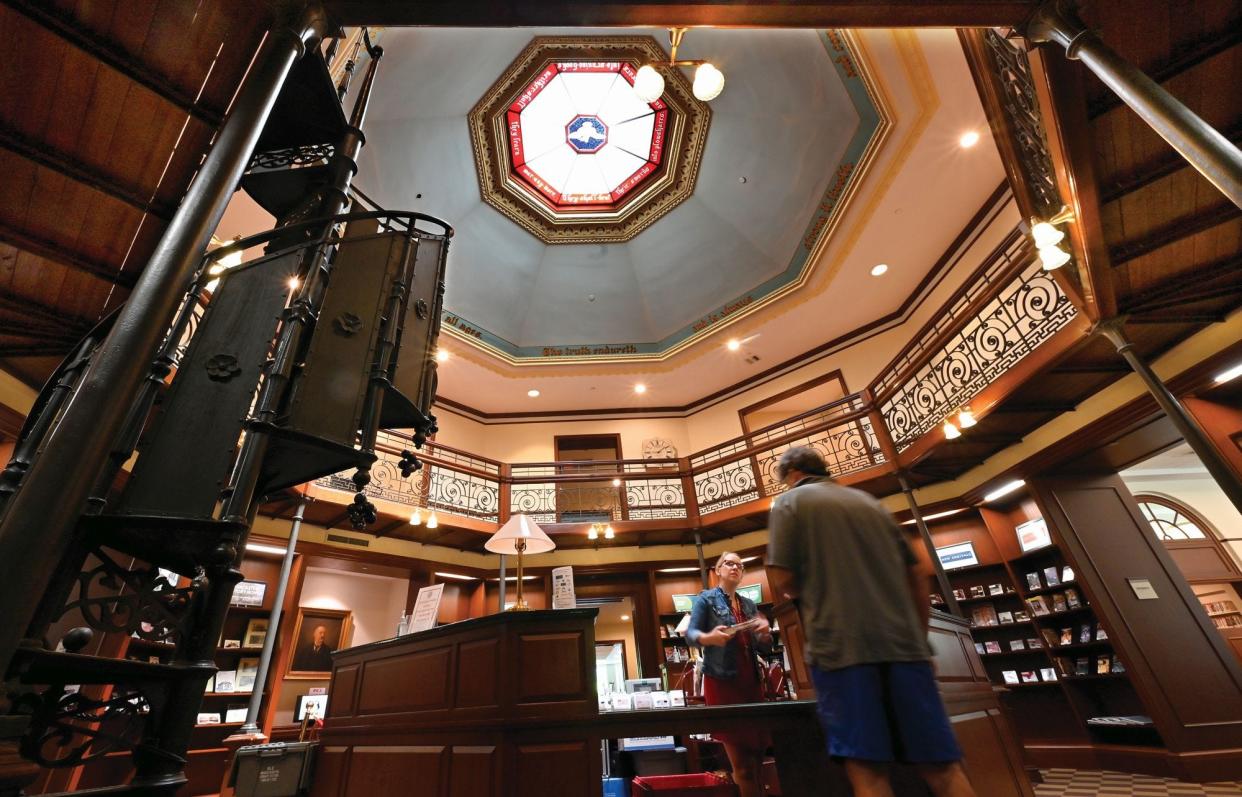
In this rowdy world, libraries offer a respite from life’s daily grind. While their walls hold whispers of the past, they embrace contemporary needs. Most important: They respond to the people.
The appeal of a library is more than in its rows of mysteries, best-sellers, classics, drama and nonfiction. This is where people can slow down, find themselves. They come because they belong, invited to share comfy chairs and sofas alongside elements of the past. Here, no one will bother them. And the total charge for their escape: Not a penny.
Public libraries are often a community centerpiece, funded by early residents and maintained by their successors as the years go by. Embraced by private and public funds, grants and Friends’ fundraising, libraries preserve what’s most beloved while they expand, adding meeting rooms, activities and electronics like audiobooks, CDs and e-books. Some of the community’s most progressive minds work in libraries, updating equipment and technology as needs evolve. A spirit of change weaves through the library.
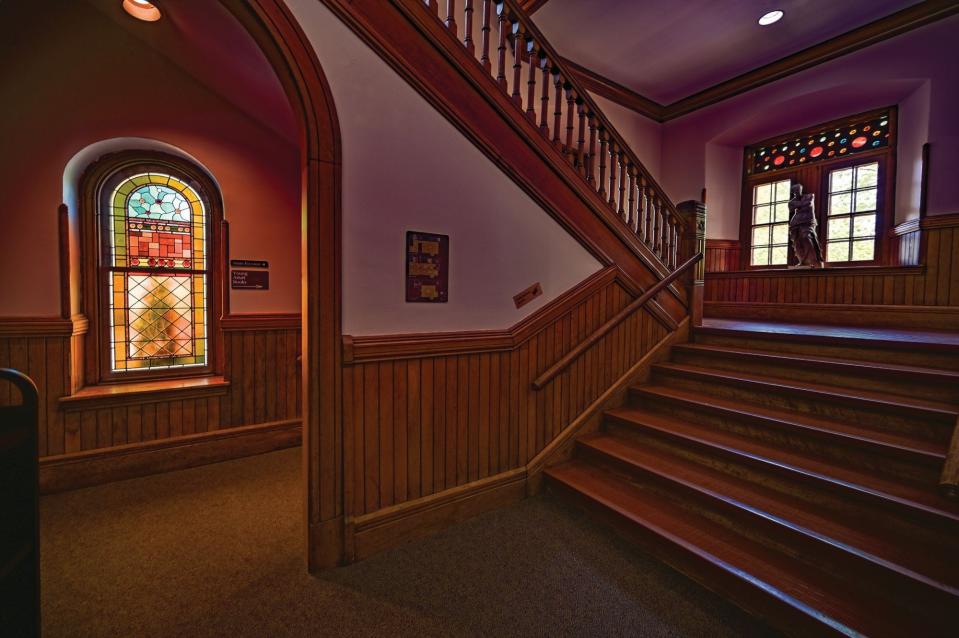
There’s a gift inside those entry doors — knowledge. Browse the stacks. Terror, romance, history, inspiration, adventure and humor reside there, alongside cozy nooks and computer work stations.
Often among a town’s oldest buildings, libraries offer respite, knowledge and an escape from the workaday world. At no charge. They are an introvert’s hideaway, a welcoming space in which to read, write, browse, absorb the peace or meet up with like-minded friends. Over the years, the library becomes a familiar stay, a home away from home (albeit a snack-less one).
Children may momentarily disturb the stillness, their bright voices filling the air as they discover new books and share their finds. Don't be alarmed, however; most libraries have added separate sections (even separate floors) for young readers.
Those who relish the subdued sound level know that many activities flourish in the side rooms — meetings, crafts, book clubs or writing groups, discussion groups, speakers. These activities coexist with the readers and deep thinkers (who may occasionally drift off in a quiet corner).
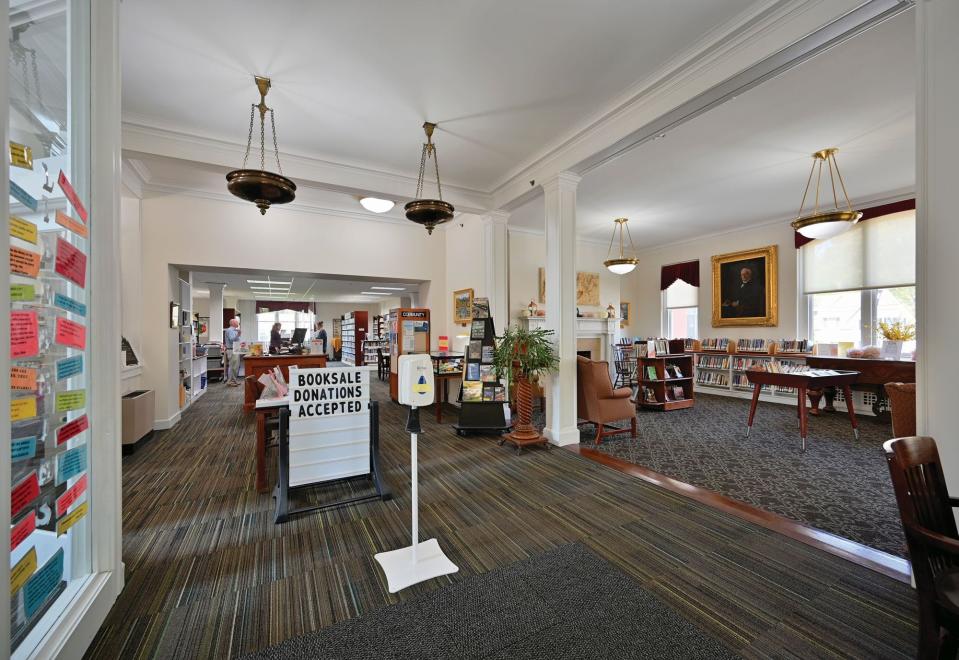
Yesterday’s beautifully designed town libraries have grown with the population, redesigned to meet contemporary uses while preserving the architectural features of their original shapes. Gaze around at the arched doorways, stained glass windows, historical art, even fireplaces in some of these libraries. Instant comfort.
While the large and many-faceted Worcester Public Library has offerings galore, we explored the county to see libraries that may be less familiar to local readers. Each is listed on the National Register of Historic Places. Lancaster, Holden and West Boylston libraries are rooted in their community’s history and growth, often built in conjunction with a school or memorial use. Considering, one can only admire the far-sighted residents who dedicated their efforts toward the creation of a place for citizens to call their own free library.
Lancaster

Thayer Memorial Library overlooks the Town Green, adjacent to the famous Bulfinch-designed First Church. To the library’s other side is Town Hall — once a school building.
The library’s roots reach back to 1790, as a paid membership library. It was established as a free town library in 1862. In 1868, soon after the Civil War, Memorial Hall — commemorating the town’s war dead — was erected, with the growing library added to its second floor, accessible by a spiral staircase that’s no longer used.
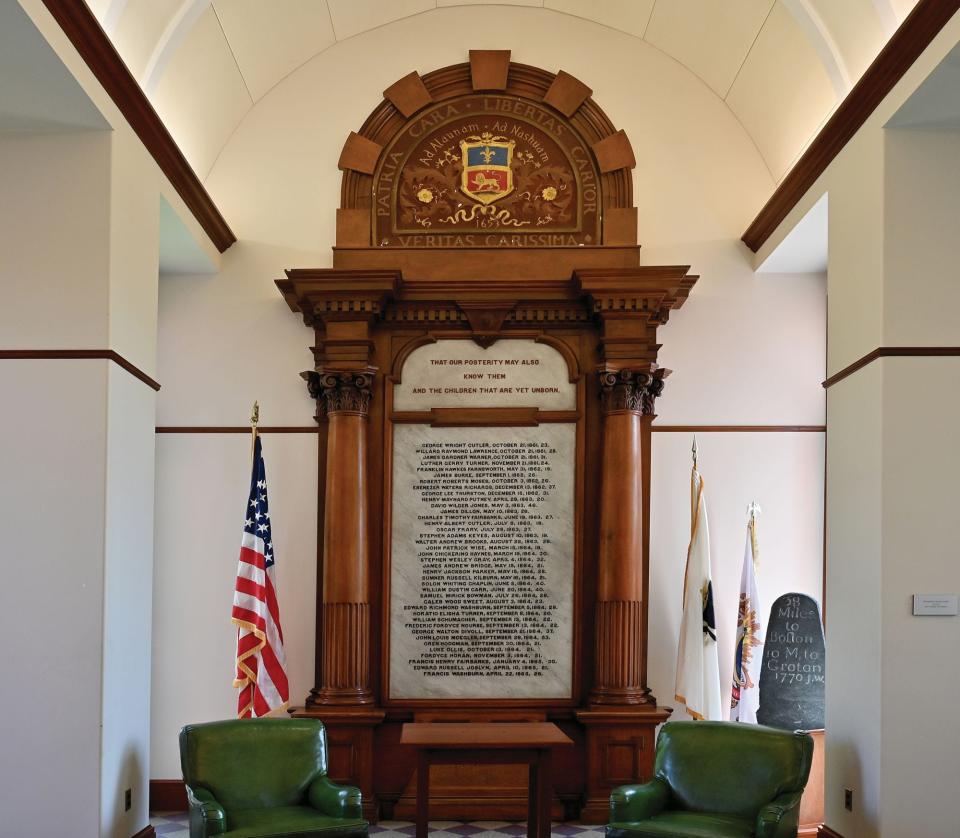
The Nathaniel Thayer family funded much of the cost for the library and established its first endowment; the library was expanded to house a growing collection of historical items and books in 1888 and further expanded in 1929. Its latest addition came in 1999, when the library more than doubled in size to 19,147 square feet including an enlarged special collections room, two meeting spaces for large and small groups, and enough space to hold more than 70,000 volumes on two floors. At that time, it was renamed Thayer Memorial Library. Today, the collection includes well over 300,000 items.
A large marble tablet with the names of deceased Civil War soldiers fills a wall in the reference room. Full-length, arched windows in that room and the opposite children’s room add ambiance and an open, expansive view.Above the circulation desk is the peace window, a stained glass dove in the sky. It points toward the original location of the veterans’ memorial, relocated into a wing as the library expanded.

Books and special collections line the round walls by the checkout. Throughout are cozy sitting spaces, tables, overstuffed chairs and sofas. The library responds to changing needs, says Assistant Library Director Rachel Rosengard, but preserves its appeal. “Libraries have to change with the times, but people also love the constancy.”That means that here people can find rare documents dating back to early town history and new collections. By the way: Anyone can use their library card at another library. The intra-library system lends and returns objects to card holders.
West Boylston
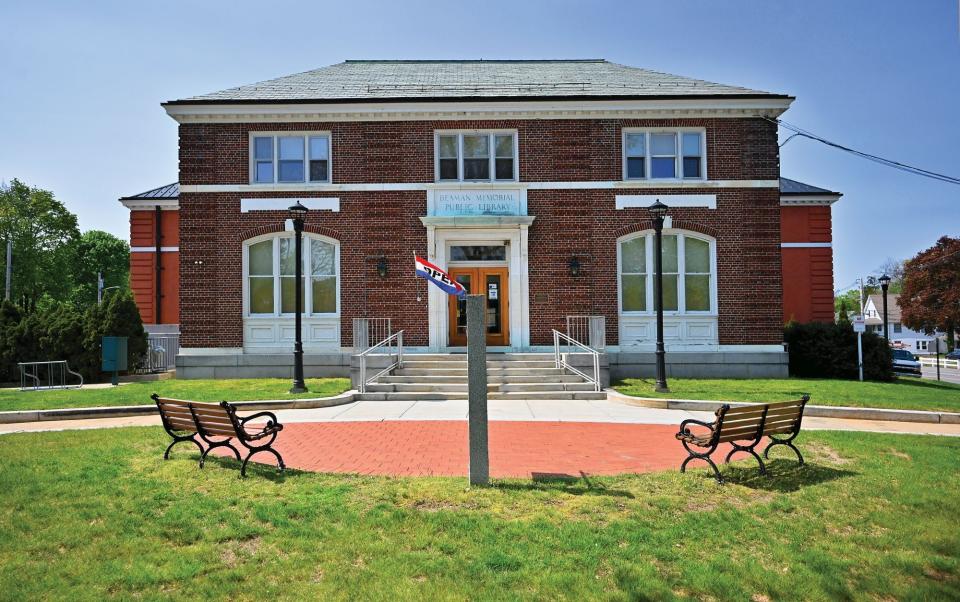
Beaman Memorial Public Library, on Newton Street, West Boylston, dates back to 1912.
Worcester architect Lucius Briggs designed the Colonial Revival building, listed on the National Register of Historic Places since 2016.
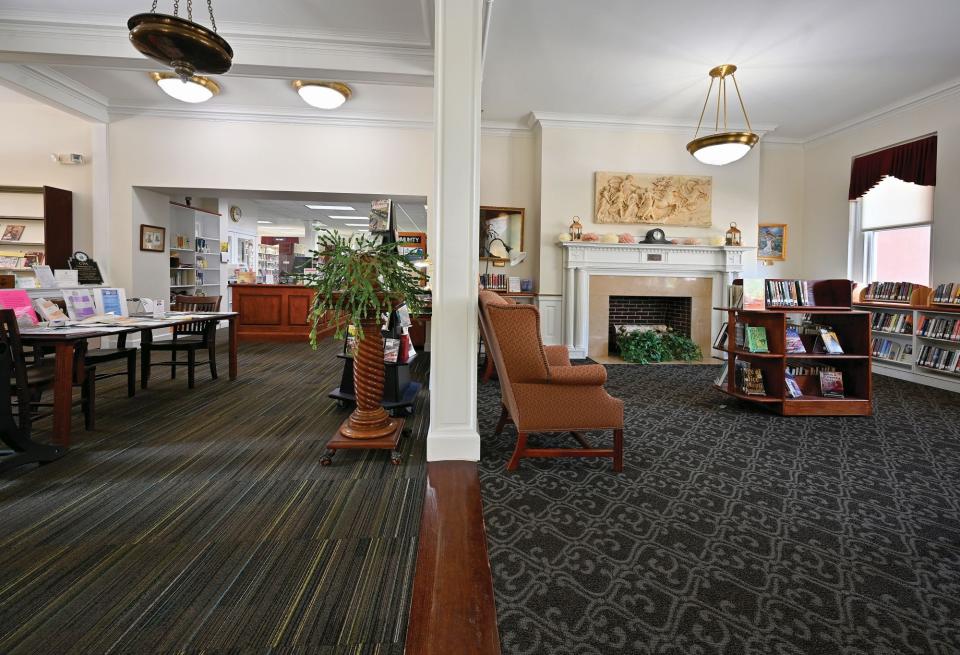
Here, one finds the same easy chairs any library worth its salt offers, along with study carrels and computer desks. It’s quiet and real plants add to the mood. A bicentennial quilt hangs on one wall, its 30 patches memorializing various town sites. Some of the walls are curved, adding to the library’s cozy feel.
Head librarian Anna Shaw says newer books are displayed in one of the oldest parts of the library, a beautiful reading room. One may feel at home by a fireplace, bright windows and parlor furniture. Certainly, some do. Shaw says even out-of-town visitors come to the library, drawn by its warm atmosphere.
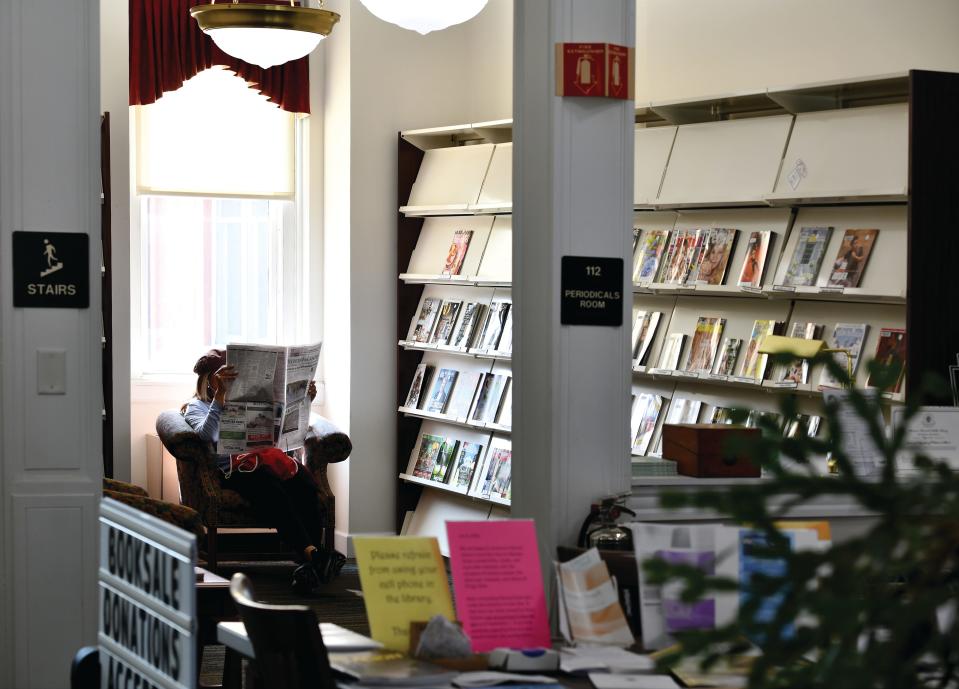
The staff works closely with schools to present programs and offer reading that appeals to young and middle-grade readers. When teens asked about a writing group, the library created one. Participants meet authors there and also share their writing with other teens.
Created in a very small setting, the library was greatly expanded in 1999 to hold a much larger collection for today’s user.
Holden
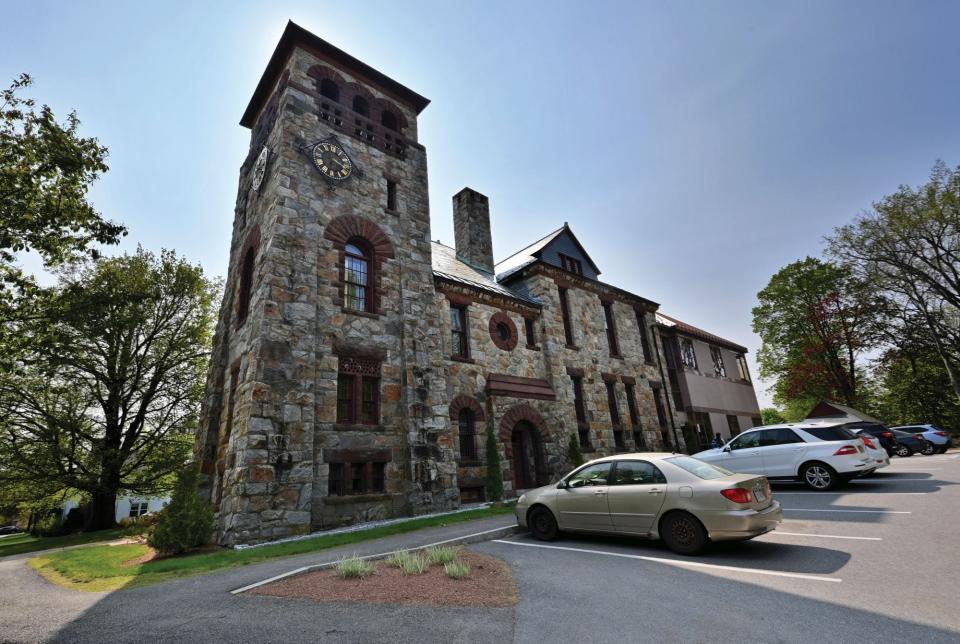
Gale Free Library, 23 Highland St., Holden, is perhaps most impressive in its structure.
Once dubbed the Gem of Worcester County, its design favors 12th century Europe with a Romanesque exterior, doorways and windows.
Dedicated in 1888, the library features a bell tower and heavy front entrance doorways — until 1926 as the shared entry to Damon Memorial High School. As the years went by and population grew, the building fully became a library. Stephen C. Earle, of Worcester, designed the building. Earle is also the person behind libraries in Munson and Princeton.
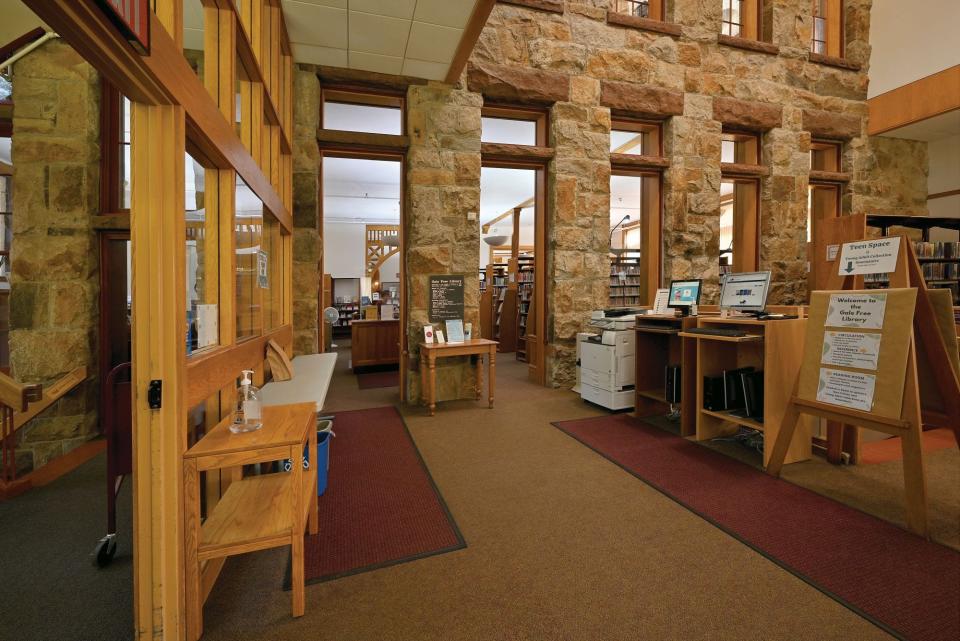
In 1989, an extension was added to the rear, using the existing granite wall as one side of the new area.
Windows throughout are arched, in keeping with the design, and an abundance of stunning stained glass windows bring soft light into many rooms. At one side, colorful stained glass circles are playful and eye-capturing. Doorways are rounded, in keeping with the pseudo Romanesque design in some spots and bringing to mind the interior of a medieval castle.
History Librarian Nancy Richards relishes the many ways that “old” coexists with “modern.” Recent books are placed in an older setting called the reading room. With overstuffed furniture and a grandfather clock, a classic painting of Holden by Daniel Boyden, it’s beyond inviting. A display of graphic novels aimed at the younger set completes the set-up. Throughout the library, historic photos and paintings remind one of the town’s past.
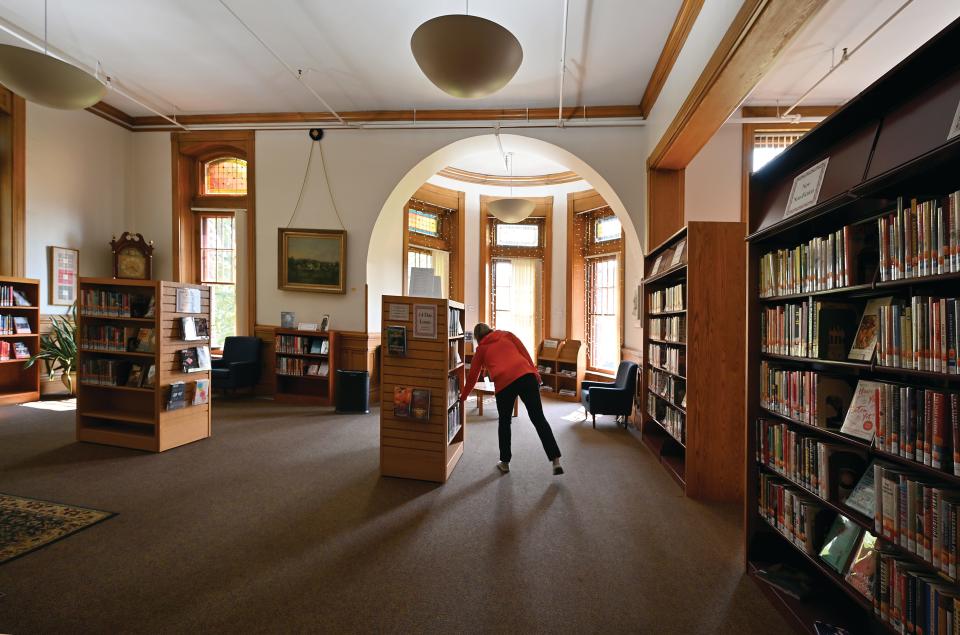
Nearby, a self-checkout stand sits in one corner, for patrons who don’t want to wait in line at the traditional desk. A tin roof over the separate children’s area softens its look. Blue slate boards from the earlier school were re-cut to become part of the new design.
Gale’s exterior is sandstone and locally quarried two-toned rose granite. Inside, there’s detailed work throughout, right down to the etched metal door hinges. Above all, the library’s construction reflected local workmen as much as possible, a stipulation of its main founder Samuel C. and Susan Damon Gale. In 1887, the library cost $45,000 to build — an unimaginable figure that would translate into the millions today. By comparison, the back addition cost $2.2 million.
This article originally appeared on Telegram & Gazette: Central Mass. libraries have always embraced 'a spirit of change'

